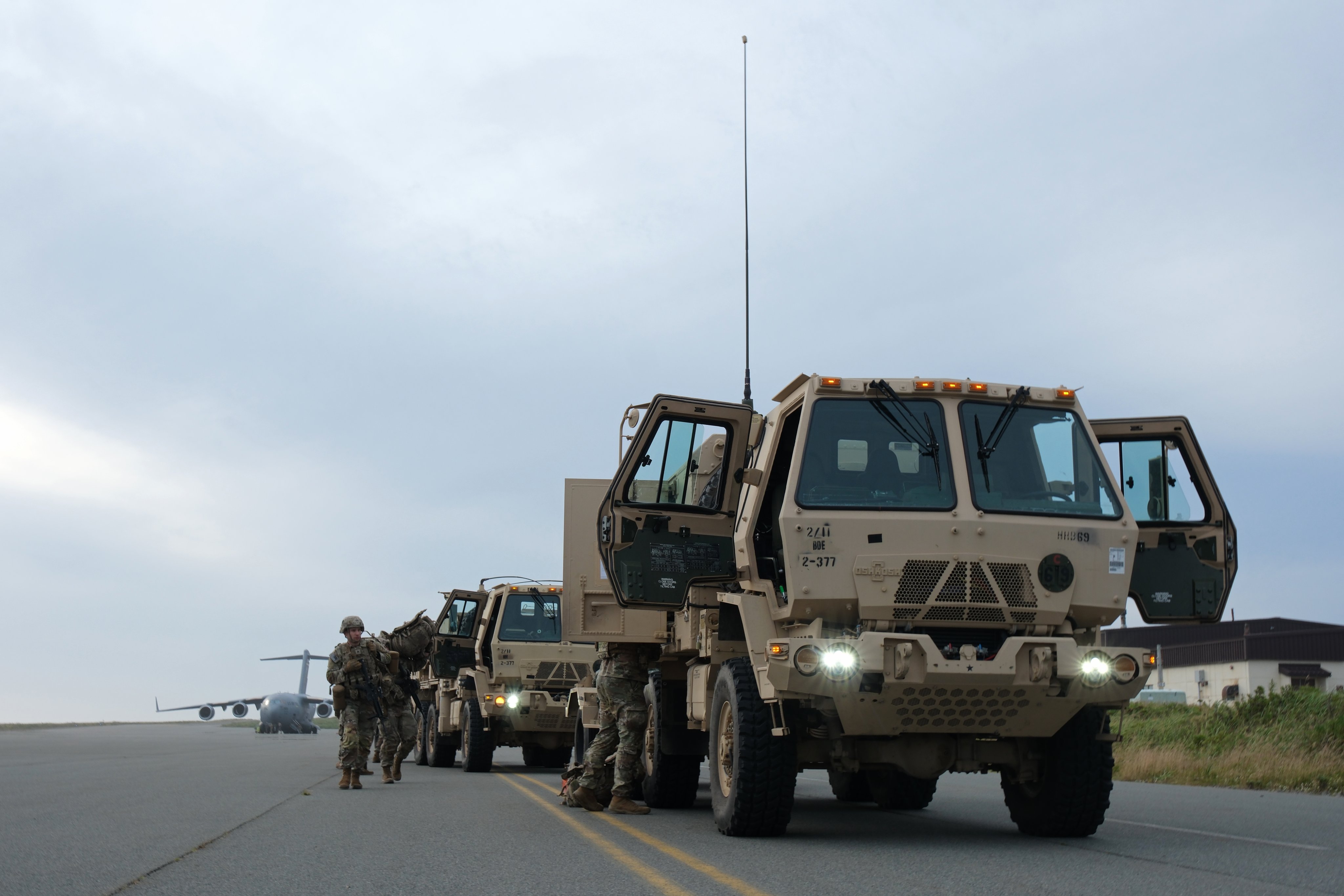‘Hotspot’ Alaska! Russian Military Aircraft Storms Into Alaska ADIZ 4th Time; US Army Stages Unexpected Show Of Force

Even as tensions between the US and Russia continue to boil, the North American Aerospace Defense Command (NORAD) reported, on September 15, the detection of Russian military aircraft near the coast of Alaska, marking the fourth such incident in the past week.
NORAD revealed that two Russian IL-38 military aircraft were detected and tracked while operating within the Alaska Air Defense Identification Zone (ADIZ).
NORAD, responsible for defending North American airspace, said that the intercepted aircraft did not pose any immediate threat and remained within international airspace in ADIZ.
The ADIZ is a crucial buffer zone where foreign aircraft must be identified to ensure national security. While it is international airspace, any unidentified military activity prompts close monitoring.
AfriPrime App link: FREE to download...
https://www.amazon.com/Africircle-AfriPrime/dp/B0D2M3F2JT
NORAD said it employs a multi-layered defense network consisting of satellites, radars, and fighter jets to detect and track aircraft within the zone.
Nonetheless, the incident marks the fourth time in the past week that NORAD has intercepted Russian military aircraft near Alaska, signaling a noticeable increase in activity amid rising tensions between the US and Russia.

The recent interceptions began on September 11, when NORAD spotted a pair of Russian military aircraft. This was followed by another interception on September 13, when NORAD detected two Russian TU-142 reconnaissance and anti-submarine aircraft.
A day later, on September 14, two additional Russian IL-38 military planes, intended for reconnaissance and anti-submarine warfare, were intercepted.
On September 15, two Russian IL-38 maritime patrol aircraft were detected and intercepted again while flying near Alaska. NORAD noted, “This Russian activity in the Alaska ADIZ occurs regularly and is not seen as a threat.”
However, in July, NORAD intercepted an unusual joint operation involving Russian and Chinese nuclear-capable bombers near Alaska. That marked the first time Russian and Chinese bombers were detected operating together in the ADIZ.
At that time, Defense Secretary Lloyd Austin was asked if the incident signaled a coordinated test of US defenses. Notwithstanding political shifts, he claimed that China and Russia were still testing US defenses.
US Army Stages Unexpected Show Of Force
In a strategic display of military strength, the US Army has deployed paratroopers, radar units, and at least one M142 High Mobility Artillery Rocket System (HIMARS) to Shemya Island, a small island off the coast of Alaska.
AfriPrime App link: FREE to download...
https://www.amazon.com/Africircle-AfriPrime/dp/B0D2M3F2JT
This sudden show of military strength occurs concurrently with Russia staging its most extensive naval exercises in several decades. Over 400 vessels, including ships, submarines, auxiliary craft, as well as aerial units, and more than 90,000 people participated in the exercise. These operations are taking place across the Pacific, the Mediterranean Sea, and the Arctic Ocean to assess combat preparedness.
On September 12, troops from the 11th Airborne Division, the 1st and 3rd Multi Domain Task Forces, arrived at Shemya Island, part of the Aleutian Islands.
The Air Force and the 176th Wing of the Alaska Air National Guard played a crucial role in the deployment by transporting personnel and equipment to the island.
Upon arrival, the soldiers swiftly set up the HIMARS system and established positions to showcase the military’s rapid deployment capabilities. Radar platoons positioned Q-53 radars along the coast while the troops took places around the island.
Shemya Island, which houses the COBRA DANE radar system operated by the United States Space Force (formerly under the Air Force’s purview), is a critical site for tracking ballistic missiles and similar threats. The island also hosts an air station.
The Army has indicated that the force projection exercise in the Aleutians is set to continue for several days.
This force projection exercise is also partially in response to the joint Russian and Chinese bomber patrol conducted near Alaska in July.
“As the number of adversarial exercises increases around Alaska and throughout the region, including joint Russian-Chinese bomber patrol, the operation to Shemya Island demonstrates the division’s ability to respond to events in the Indo-Pacific or across the globe, with a ready, lethal force within hours,” said Maj. Gen. Joseph Hilbert, commanding general of the 11th Airborne Division.
Maj. Gen. Hilbert explained that the exercise showcases the division’s capability of rapidly mobilizing a powerful and lethal force.
The 11th Airborne Division, stationed at Joint Base Elmendorf-Richardson and Fort Wainwright in Alaska, is tasked with defending the northern and western extremes of the US, including the Arctic — a region of growing strategic importance due to climate change.
Hilbert told Business Insider that the exercise highlights the US Army Pacific’s ability to deploy assets effectively and with minimal notice to even the most remote locations.
He also stated that the HIMARS system underscores the strategic value of long-range fires in force projection and deterrence, a concept also relevant to the ongoing conflict in Ukraine.
The exercise, which will extend into the following week, is also intended to be highly visible to US allies and adversaries.
While discussions often center around the secrecy of military capabilities, the Army opted to conduct this exercise to showcase its preparedness and capacity to position essential resources in unforeseen areas. This show of force serves as a signal of readiness and strategic presence to both friends and foes.
AfriPrime App link: FREE to download...
- Questions and Answers
- Opinion
- Story/Motivational/Inspiring
- Technology
- Art
- Causes
- Crafts
- Dance
- Drinks
- Film/Movie
- Fitness
- Food
- Games
- Gardening
- Health
- Home
- Literature
- Music
- Networking
- Other
- Party
- Religion
- Shopping
- Sports
- Theater
- Wellness
- News
- Culture
- War machines and policy


